Well, let's analyze this circuit. The transfer function is given by:
\begin{equation}
\begin{split}
\mathscr{H}\left(\text{s}\right)&=\frac{\text{V}_\text{o}\left(\text{s}\right)}{\text{V}_\text{i}\left(\text{s}\right)}\\
\\
&=\frac{\displaystyle\text{sL}\space\text{||}\space\frac{\displaystyle1}{\displaystyle\text{sC}}\space\text{||}\space\text{R}_2}{\displaystyle\text{R}_1+\left(\text{sL}\space\text{||}\space\frac{\displaystyle1}{\displaystyle\text{sC}}\space\text{||}\space\text{R}_2\right)}\\
\\
&=\frac{\displaystyle\frac{\displaystyle1}{\displaystyle\frac{\displaystyle1}{\displaystyle\text{sL}}+\frac{\displaystyle1}{\displaystyle\frac{\displaystyle1}{\displaystyle\text{sC}}}+\frac{\displaystyle1}{\displaystyle\text{R}_2}}}{\displaystyle\text{R}_1+\frac{\displaystyle1}{\displaystyle\frac{\displaystyle1}{\displaystyle\text{sL}}+\frac{\displaystyle1}{\displaystyle\frac{\displaystyle1}{\displaystyle\text{sC}}}+\frac{\displaystyle1}{\displaystyle\text{R}_2}}}\\
\\
&=\frac{\displaystyle\text{LR}_2\text{s}}{\displaystyle\text{CLR}_1\text{R}_2\text{s}^2+\text{L}\left(\text{R}_1+\text{R}_2\right)\text{s}+\text{R}_1\text{R}_2}
\end{split}\tag1
\end{equation}
Where \$\displaystyle\alpha\space\text{||}\space\beta\space\text{||}\space\gamma=\frac{\displaystyle1}{\displaystyle\frac{\displaystyle1}{\displaystyle\alpha}+\frac{\displaystyle1}{\displaystyle\beta}+\frac{\displaystyle1}{\displaystyle\gamma}}\$.
When working with sinusoidal inputs we know that we can write \$\text{s}:=\text{j}\omega\$ where \$\text{j}^2=-1\$. So we get:
\begin{equation}
\begin{split}
\left|\space\underline{\mathscr{H}}\left(\text{j}\omega\right)\right|&=\displaystyle\left|\frac{\displaystyle\text{LR}_2\text{j}\omega}{\displaystyle\text{CLR}_1\text{R}_2\left(\text{j}\omega\right)^2+\text{L}\left(\text{R}_1+\text{R}_2\right)\text{j}\omega+\text{R}_1\text{R}_2}\right|\\
\\
&=\displaystyle\frac{\displaystyle\left|\text{LR}_2\text{j}\omega\right|}{\displaystyle\left|\text{CLR}_1\text{R}_2\cdot\text{j}^2\cdot\omega^2+\text{L}\left(\text{R}_1+\text{R}_2\right)\text{j}\omega+\text{R}_1\text{R}_2\right|}\\
\\
&=\displaystyle\frac{\displaystyle\text{LR}_2\omega}{\displaystyle\left|\text{R}_1\text{R}_2-\text{CLR}_1\text{R}_2\omega^2+\text{L}\left(\text{R}_1+\text{R}_2\right)\omega\text{j}\right|}\\
\\
&=\displaystyle\frac{\displaystyle\text{LR}_2\omega}{\displaystyle\sqrt{\left(\text{R}_1\text{R}_2-\text{CLR}_1\text{R}_2\omega^2\right)^2+\left(\text{L}\left(\text{R}_1+\text{R}_2\right)\omega\right)^2}}\\
\\
&=\frac{\displaystyle\text{LR}_2\omega}{\displaystyle\sqrt{\left(\text{R}_1\text{R}_2\left(1-\text{CL}\omega^2\right)\right)^2+\left(\text{L}\left(\text{R}_1+\text{R}_2\right)\omega\right)^2}}
\end{split}\tag2
\end{equation}
Now, let's analyze a few cases:
- \$\omega\space\to\space0\$:
$$\lim_{\omega\space\to\space0}\left|\space\underline{\mathscr{H}}\left(\text{j}\omega\right)\right|=0\tag3$$
- \$\omega\space\to\space\infty\$:
$$\lim_{\omega\space\to\space\infty}\left|\space\underline{\mathscr{H}}\left(\text{j}\omega\right)\right|=0\tag4$$
- When is \$\left|\space\underline{\mathscr{H}}\left(\text{j}\omega\right)\right|\$ at a maximum:
$$\frac{\partial\left|\space\underline{\mathscr{H}}\left(\text{j}\hat{\omega}\right)\right|}{\partial\hat{\omega}}=0\space\Longleftrightarrow\space\hat{\omega}=\frac{1}{\sqrt{\text{CL}}}\tag5$$
So, we get:
$$\left|\space\underline{\mathscr{H}}\left(\text{j}\hat{\omega}\right)\right|=\frac{\text{R}_2}{\text{R}_1+\text{R}_2}\tag6$$
So, the cut-off frequency is:
$$\left|\space\underline{\mathscr{H}}\left(\text{j}\omega\right)\right|=\frac{1}{\sqrt{2}}\cdot\left|\space\underline{\mathscr{H}}\left(\text{j}\hat{\omega}\right)\right|\space\Longrightarrow\space$$
$$\omega_\pm=\frac{\displaystyle\sqrt{\frac{\text{L}\left(\text{R}_1+\text{R}_2\right)^2+\text{C}\left(2\text{R}_1\text{R}_2\right)^2}{\text{L}}}\pm\left(\text{R}_1+\text{R}_2\right)}{\displaystyle2\text{CR}_1\text{R}_2}\tag7$$
So, the bandwidth is given by:
$$\mathcal{B}:=\left|\omega_+-\omega_-\right|=\frac{\text{R}_1+\text{R}_2}{\text{CR}_1\text{R}_2}\tag8$$
And the quality factor is given by:
$$\mathcal{Q}:=\frac{\hat{\omega}}{\mathcal{B}}=\frac{\displaystyle\frac{1}{\sqrt{\text{CL}}}}{\displaystyle\frac{\text{R}_1+\text{R}_2}{\text{CR}_1\text{R}_2}}=\sqrt{\frac{\text{C}}{\text{L}}}\cdot\frac{\text{R}_1\text{R}_2}{\text{R}_1+\text{R}_2}\tag9$$
Notice that in your case your bandwidth is equal to:
$$\mathcal{B}=\frac{4010000000}{127}\space\text{rad/sec}=\frac{2005000000}{127 \pi }\space\text{Hz}\approx5.02529\space\text{MHz}\tag{10}$$
Which is way too broad.
